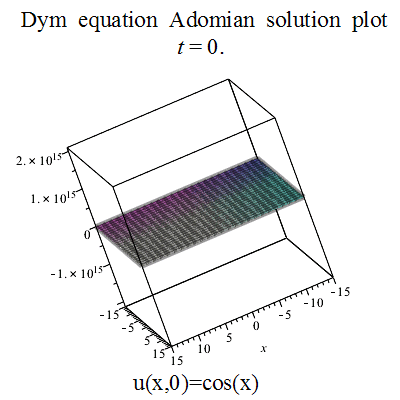|
Adomian Decomposition Method
The Adomian decomposition method (ADM) is a semi-analytical method for solving ordinary and partial nonlinear differential equations. The method was developed from the 1970s to the 1990s by George Adomian, chair of the Center for Applied Mathematics at the University of Georgia. It is further extensible to stochastic systems by using the Ito integral. The aim of this method is towards a unified theory for the solution of partial differential equations (PDE); an aim which has been superseded by the more general theory of the homotopy analysis method. The crucial aspect of the method is employment of the "Adomian polynomials" which allow for solution convergence of the nonlinear portion of the equation, without simply linearizing the system. These polynomials mathematically generalize to a Maclaurin series about an arbitrary external parameter; which gives the solution method more flexibility than direct Taylor series expansion. Ordinary differential equations Adomian me ... [...More Info...] [...Related Items...] OR: [Wikipedia] [Google] [Baidu] |
Ordinary Differential Equations
In mathematics, an ordinary differential equation (ODE) is a differential equation (DE) dependent on only a single independent variable. As with any other DE, its unknown(s) consists of one (or more) function(s) and involves the derivatives of those functions. The term "ordinary" is used in contrast with ''partial'' differential equations (PDEs) which may be with respect to one independent variable, and, less commonly, in contrast with ''stochastic'' differential equations (SDEs) where the progression is random. Differential equations A linear differential equation is a differential equation that is defined by a linear polynomial in the unknown function and its derivatives, that is an equation of the form :a_0(x)y +a_1(x)y' + a_2(x)y'' +\cdots +a_n(x)y^+b(x)=0, where a_0(x),\ldots,a_n(x) and b(x) are arbitrary differentiable functions that do not need to be linear, and y',\ldots, y^ are the successive derivatives of the unknown function y of the variable x. Among ord ... [...More Info...] [...Related Items...] OR: [Wikipedia] [Google] [Baidu] |
